10×10 Custom Spider Inflatable Tent
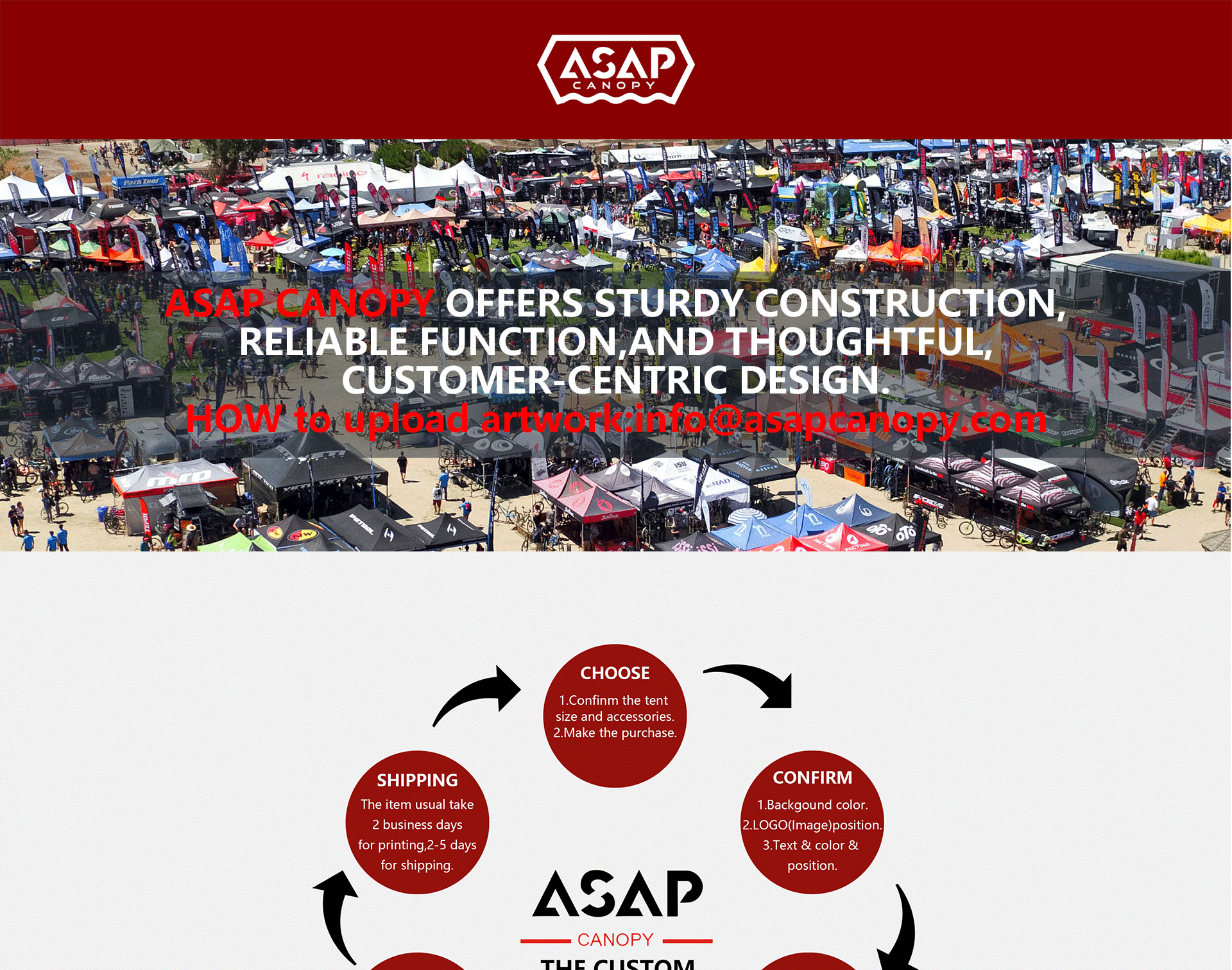
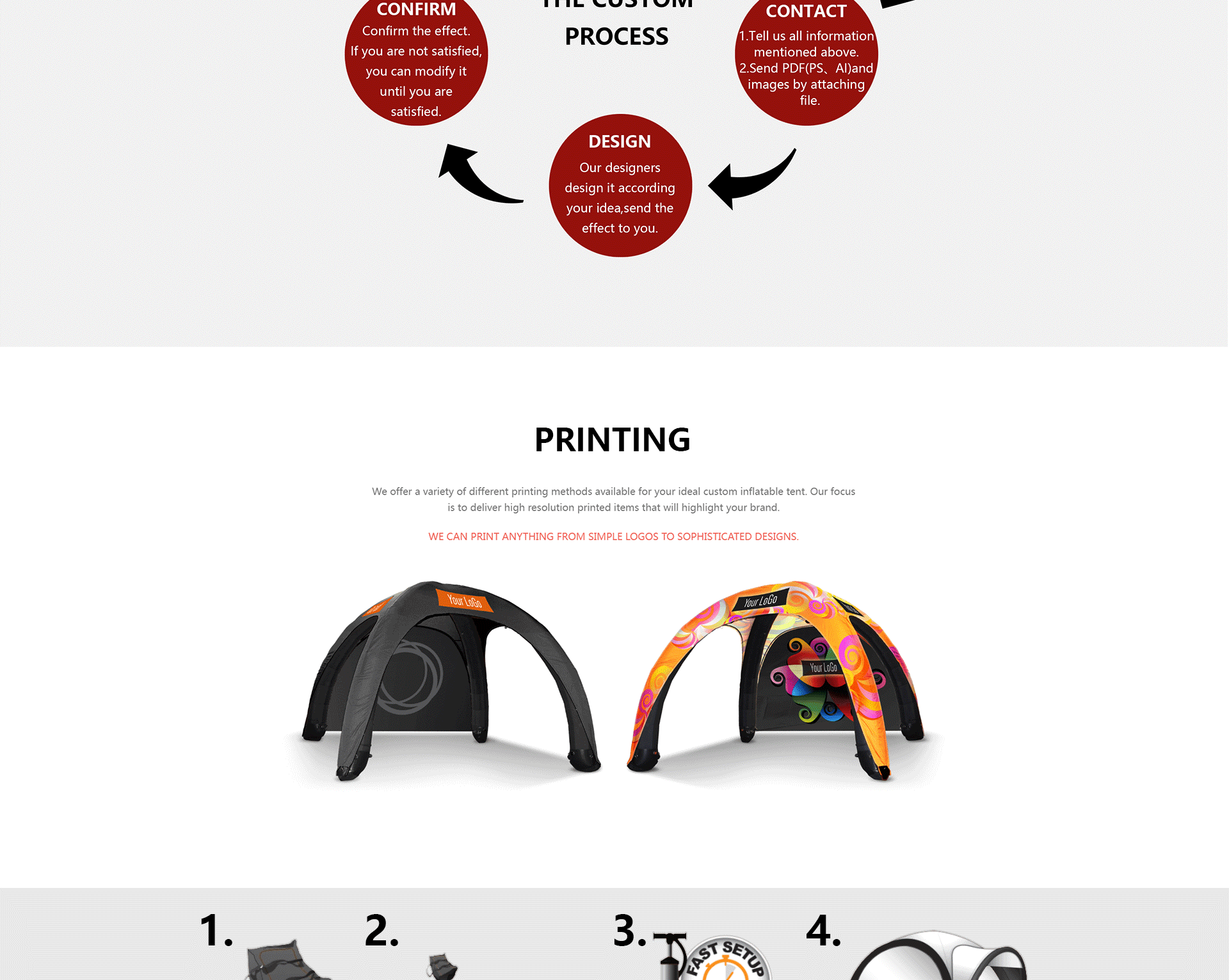



10×10 Custom Spider Inflatable Tent
Elevate your presence at events with a personalized inflatable canopy. Our tents are durable and puncture-resistant, showcasing your unique graphics on every inch of canvas. You control the design, and our dye sublimation tech prints vibrant, scratch-resistant graphics on 600D polyester. Custom graphics attach with zippers, and they’re easily removable and washable for future events.
Inflatable canopies offer unmatched convenience for on-the-go use, eliminating the need for traditional Inflatable Canopy frames. They’re lightweight and compact, ideal for portability. These canopies resist water and flames, featuring UV-protected finishes for indoor and outdoor events.
Inflatable Canopy Key Features:
- Fast and Easy Setup: The Inflatable Canopy can be set up easily without any tools, requiring only an air pump.
- Aerodynamic Shape Technology: The Inflatable Canopy is designed to withstand bad weather conditions and rugged terrains.
- Fully Customizable: The Inflatable Canopy can be customized with any design, logo, or color.
- Fast Airflow One-Way Valve: This feature ensures that no air will escape when the air pump is unplugged.
- Stainless Steel Ballast Connections: Reinforced anchoring system for securing the Inflatable Canopy on different terrains.
- Over Pressure Valves: Located on all four legs, these valves provide maximum security by automatically releasing excess air when optimum pressure is reached.
- Heavy Duty Wall Zippers: These allow walls and windows to be added for customization.
- 600 Denier Polyester: High-quality fabric ideal for outdoor use, protecting against wind, water, and UV rays, and is fire retardant.
- Dacron® Outer Tube: Offers solid durability and resistance in variable conditions.
- Polyurethane Inner Tube with Airtight Technology (AIT): Does not require continuous air supply to maintain the correct amount of pressure.
Inflatable Canopy Sizes Available:
- Inflatable Canopy 10ft x 10ft
- Inflatable Canopy 13ft x 13ft
- Inflatable Canopy 16ft x 16ft
- Inflatable Canopy 20ft x 20ft
- Inflatable Canopy 23ft x 23ft
- Inflatable Canopy 26ft x 26ft
Inflatable Canopy Custom Options:
- Wall
- Awning
- Banner
- Connector
Inflatable Canopy Accessories:
- Light Wind Stake Kit: Includes 4 stakes, 4 ropes, and 1 storage bag.
- Electric Pump: The fastest solution for inflating the AirDome.
- Professional Ratchet + Rope: Automatic lock and release rope & ratchet – Holds up to 250 lbs.
- Professional Stakes 3/8in X18in: Designed to hold the Inflatable Canopy in place in case of heavy winds.
- 40lb, Rubber Weight: Ballast weights to anchor the Inflatable Canopy on asphalt.
Here are some common questions about Inflammable Canopy
1. Inflatable Canopy safe?
2. Inflatable Canopy dangerous?
3. Inflatable Canopy durable?
4. Inflatable Canopy worth it?
5. Can Inflatable Canopy pop up?
6. Can Inflatable Canopy get wet?
7. How Inflatable Canopy?
8. How to inflate Inflatable Canopy?
9. Inflatable Canopy good in wind?
10. How to inflate Inflatable Canopy?
11. What are Inflatable Canopy good for?
12. What are Inflatable Canopy made of?
13. Who can inflate to Inflatable Canopy?
14. Why Inflatable Canopy?
15. Are Inflatable Canopy good in wind?
16. How much wind can a Inflatable Canopy take?
17. Will Inflatable Canopy pop?
1. Is an Inflatable Canopy Safe?
Inflatable canopies are generally quite safe when properly secured and monitored during use. They are constructed from durable, thick vinyl or 100% waterproof rip-stop material that are puncture and tear resistant. The inflatable beams are also designed to withstand pressure for stable structure without sudden deflation or collapse risks.
As always with temporary outdoor structures, some caution is still warranted. It’s important to securely anchor inflatable canopies in case of wind gusts using stakes and ballast weights per the manufacturer’s guidelines. Don’t overload electrical circuits that power any fans, lights or accessories. Monitor weather conditions and shut off air blowers in severe storms. Practice basic electric, fire and trip precautions as you would inside any tent space.
Following provided set-up instructions and ongoing monitoring for stability, an inflatable canopy presents minimal risks beyond typical outdoor venue hazards. Take basic safety measures and your event can safely enjoy these fun inflatable structures.
2. Are Inflatable Canopies Dangerous?
Inflatable canopies do carry risks if not properly secured, monitored and operated. Their lightweight, temporary nature means stabilizing precautions are essential to prevent the structures from blowing away, collapsing, tipping over or posing other hazards to people below.
Potential dangers include detached canopies blowing into crowds, causing falls or blocking access ways. Overturning from winds can crush anything underneath. Overloaded electrical circuits may spark fires, while rain leaks cause wet surfaces.
Thankfully these outcomes are fully preventable with safe use guidelines. Always anchor inflatable canopies using stakes, weights and tight guy lines equal to the canopy’s wind resistance rating. Check for stability in wind periodically. Keep people from gathering underneath while empty. Shut off and deflate during severe weather. Use ground fault interrupter circuits for powering any electric accessories to prevent shocks.
While inflatable canopy dangers do exist without safety measures, the risks are easily controlled by following the manufacturer’s operating instructions at all times during your event.
3. Are Inflatable Canopies Durable?
Yes, inflatable canopies are quite durable outdoor shelter solutions thanks to the tear, mold and UV resistant vinyl or waterproof rip-stop material panel materials used in construction. They are designed to endure repeated setups, wind, rain and sun exposure while still maintaining air retention for seasons of use.
Premium inflatable canopy models feature quadruple stitched stress points, reinforced edges and corners, and durable powder coated structural parts below the fabric roof. Thick vinyl skins range from 14 oz up to full 22 oz canopies built to handle frequent commercial use demands.
With proper care, maintenance and storage between events, quality inflatable canopies often carry multi-year warranties from leading brands. Follow suggested anchoring guidelines, don’t exceed weight limits, fully dry off the canopy before deflating and packing away to prevent moisture damage for the longest lasting durability and enjoyment.
4. Are Inflatable Canopies Worth It?
At first glance inflatable canopies may seem expensive compared to basic popup tent options, but their enhanced benefits often make them a worthwhile investment:
Much faster, easier setup without extensive pole assembly. Just unroll, anchor and inflate in minutes.
Customizable sizes open up more layout options rather than standard frames.
No center poles improves usable space and visibility.
Higher height clearance for standing room comfort.
Built-in continuous air blowers maintain full inflation for hours unlike manual air tents.
Advanced portability packs into carrying bags versus awkward popup frames.
So while pricier upfront, inflatable canopies offer great versatility, last for years, and save substantial labor compared to traditional camping or event tents. For frequent events and maximum convenience, the value is certainly worthwhile.
5. Can Inflatable Canopies Pop Up?
Unlike traditional framed popup canopy tents, inflatable canopies rely on constant airflow rather than mechanical structure to remain upright. So they cannot instantaneously pop up on their own. However, they come close!
Premium inflatable canopies infuse with air extremely rapidly – most achieve full inflation and form in under 1 minute. Combining swift inflation with compact storage bags compared to bulky frames, inflatable canopies offer vastly simplified setup comparable to popup tent convenience.
Speedy one-step deployment makes inflatable options perfect for sudden outdoor needs or frequent events on the go requiring a temporary shelter. While technically not an instant popup, brief airflow fills out shapes in no time. Deflation and packing reverses just as fast for quick exits.
So if seeking truly instant, self-erecting canopies, framed popups still reign supreme. But for barely belated, full-sized deployments in 60 seconds, inflatable canopies pop up quite swiftly!
6. Can Inflatable Canopies Get Wet?
Inflatable canopies can absolutely get wet and withstand rain exposure while erected. Premium vinyl and waterproof rip-stop material fabric panels are naturally water resistant to prevent interior seepage from light rainfall. Welded seam construction also mitigates leaks throughout the canopy roof and enclosed sides if present.
Heavier downpours will still seep moisture over time, however. So while inflatable canopies provide temporary wet weather shelter, they cannot guarantee fully dry interiors in extreme precipitation. Frequent monitoring and towel drying is wise to limit saturating the inner tent fabric.
Always deflate canopy tubes and awnings at the first sign of storms or gusty winds to prevent water-weighted collapses and damage. Allow the canopy to comprehensively air dry before packing away as well to prevent mold growth.
With sound weather judgement, inflatable canopies reliably sustain light to moderate moisture while shielding the activities below. But be ready to exercise shutdown procedures in severe conditions for safety and equipment longevity.
7. How Are Inflatable Canopies Constructed?
Inflatable canopies consist of durable vinyl or waterproof rip-stop material panels cut and sealed together to form the roof and perimeter walls when filled with air. Internal chambers with valve openings get pumped with continuous airflow from electric blowers to maintain full upright shaping.
The inflated structural chambers are made from thick vinyl or plastic panels reinforced with extra layers of protective ultraviolet blocking coatings, polyester scrim or mesh webbing. These resist deterioration and punctures over years of outdoor inflations.
Inflatable canopies may feature attachment points, handles and wheels for transport plus D-rings, straps and hooks to affix tie downs for stability when erected. Zippered vents, screens and removable window panels allow airflow control.
Flooring beneath may be integrated or detachable to suit various surface conditions. Simple incline or vertical wall designs maximize height and space while high peaked forms add rain protection. When deflated, robust interlocking poles, spreaders and stakes efficiently collapse into portable bundles.
8. How To Inflate an Inflatable Canopy
Filling an inflatable canopy with air to achieve full stable structure is speedy and straightforward using the integrated electric airflow system:
1. Unroll and untie the deflated canopy bundle into its approximate position, anchoring rear and sides first.
2. Locate the built-in blower system (often rear wall). Plug into grounded extension cord and flip switch to start.
3. Watch as tubes and chambers steadily fill and take shape as air circulates, lifting walls and roof upward.
4. Ensure all perimeter edges get evenly filled out as the canopy reaches full size in just 1-2 minutes.
5. Seal flaps or zippers once inflated. Add ties, stakes and weights for security against winds before entering.
6. Monitor airflow noise to confirm adequate pressure is maintained by the continuous blowing fan as long as canopy is occupied.
Remember to fully deflate, dry and repack the canopy into storage bag after use for best longevity.
9. Are Inflatable Canopies Good in Wind?
Inflatable canopies can maintain excellent wind resistance when following all anchoring, ballast and guy line procedures suggested by the manufacturer. Models meant for all-weather event use should withstand gusts 35-50mph or more before risking dislodgement or stress tears.
The key is adding enough counteracting weights – at least 50-100 lbs per inflatable arch or vertical wall. Combine sandbags or dumbbells on each corner ring, plus stakes penetrating a foot into soil. Crossing ratchet straps further secure tops to frame poles.
Monitoring tension in blustery conditions allows responders to add reinforcement before canopies start loosening at anchors. Deflate immediately if wind speeds appear to overpower resistance capacity despite tiedowns.
While inflatable canopies handle average winds quite well, have a backup plan for moving activities inside a building or vehicle if faced with severe storms arising suddenly. Never seek full shelter in any temporary outdoor tent structure.
10. What Are Inflatable Canopies Good For?
Inflatable canopies provide versatile covered spaces perfect for:
Events – Sturdy shelter for vendor fairs & shows, catered galas and outdoor celebrations.
Storage – Instant temporary warehousing for overflow inventory, equipment, vehicles & more.
Camping – Spacious weatherproof gathering and activity hub for groups when camping.
Disaster Relief – Rapidly deployed safe zones for supplies, meals, beds and sanitation services.
Work Sites – On-site lunch/break room refuge from sun, rain and debris at constructions zones.
Agriculture – Mobile livestock birthing and procedure spaces to uphold animal health in farms and stables.
Recreation – Poolside sun shade, outdoor grilling canopy, enclosed golf cart garage and other leisure spaces.
The portability, ease and custom sizing of inflatable canopies adapt them to almost any temporary shelter needs for large groups with the bonus of full climate control.
11. What Are Inflatable Canopies Made Of?
Inflatable canopies consist of durable, thick panels of vinyl coated polyester or waterproof rip-stop material reinforced with meshes and scrims for optimal tear resistance against punctures and UV damage over repeated uses.
High density fabrics prevent air leakage for maintaining full inflation. They also limit moisture saturated seepage inside from wet weather while blocking harsh sun and winds through specialized UV inhibitors and laminates.
Structural support poles assemble from rust-resistant, lightweight aluminum or steel for quick mounting and breakdowns. turkey feather
Commercial grade canopies mean longer lifespan fabrics ranging from 14 oz vinyl up to 22 oz. dimensions.inflatable turkey Inverted-V style roofs and steep angled legs prevent snow/debris accumulation compared to flat tops.
Sturdy designs withstand winds 35+ mph while anchored. Oversized zippers allow complete removable side wall attachments for adjustable ventilation.
12. Who Can Inflate an Inflatable Canopy?
Inflating an inflatable canopy is simple enough for anyone to achieve within about 1 minute using the integrated electric blowing system. As long as you can lift or roll out the bundled canopy into position and plug in the attached fan, the automated airflow fills things out from there.
Make sure the inflatable canopy is clearly labeled with the voltage and wattage ratings required so you provide adequate power source. For larger canopies, help spreading out the roof and side panels as the beams fill can speed airflow distribution.
Anchor ties should get secured at the start before walls lift fully. So while one person can usually inflate a canopy alone, having a second individual to assist with stabilizing the expanding structure is very helpful.
Children should not be trusted to handle canopy inflation without complete adult supervision. But otherwise, any person able to follow basic instructions should be able to erect these convenient outdoor shelters quite effortlessly thanks to the electric blowers doing all the expandable work!
13. Why Choose Inflatable Canopies?
Inflatable canopies beat out traditional frame tents and metal peaked canopies across almost all performance metrics:
Faster Deployment – Just 1-2 minutes max for full enclosed ready shelter.
Simplified Transport – Deflates for compact carrying to almost any location.
Custom Sizing – Tailor coverage from small 10×10’ to huge 50×100’ range.
Good Wind/Rain Resistance – Multi-layer durable roof materials resist elements.
Minimal Assembly – No complex frame parts requiring intense labor to construct.
Electronic Inflation – No manual pumping needed to uphold.
Adaptable Ventilation – Zip out walls, screens and flaps control interior climate.
While inflatable canopies carry a greater upfront cost, their vast conveniences in transport, minimal assembly, extensive size flexibility and weather resistance deliver major savings in work, wait times and logistics.
One investment sets up reliable temporary shelter exactly where and when groups need it most. That versatility explains the rise in popularity over traditional framed options.
14. Are Inflatable Canopies Good in Wind?
Inflatable canopies can provide ample wind resistance by securing enough stabilizer accessories to match or exceed maximum rated gust speeds – usually 35-60mph range depending on model. Sturdy corner anchor ropes, crossed ratchet straps and 50-100lbs of brace weights per leg keep the canopy grounded.
Monitoring tiedowns in gusty conditions allows for adding reinforcement before uplift begins lifting the frame. Sidewalls and screens should get removed as winds strengthen to prevent catching extra air resistance.
Aim to lower overall height and angle if possible too. Inflate to 75% capacity since taut corners maintain structure over bloated topslater susceptible tobillowing up.
While secured inflatable canopies withstand average winds quite well, be ready to instantly deflate and evacuate people if severe storm gusts override stabilizer capacities. Never presume full guaranteed shelter from any temporary outdoor canopy in extreme weather events.
15. How Much Wind Can an Inflatable Canopy Take?
Most quality mid-range and commercial grade inflatable canopies hold up against moderate wind speeds in the 20 to 35mph range when following all provided tiedown procedures. Economical lightweight models may only tolerate gusts of 15 to 25mph before risking uplift or puncture failure.
Heavy duty options for full-time outdoor venue use often bear stability ratings to withstand winds upwards of 60mph or higher – on par with Category 1 hurricane force. This assumes at least 50-100lbs of brace weights per corner plus lag bolts, strong ratchet straps and reinforced corner rings all working in tandem to prevent dislodgement.
Exceeding rated limits risks canopy tears from flapping stress as well as collateral damage if broken free. Remember wind resistance diminishes as panels accumulate moisture or suffer small unseen seam damage that jeopardizes structure integrity over time after repeated use.
While inflatable canopies resist moderate wind speeds quite well compared to traditional tents, exceeding intensity ratings can cause catastrophic failure. Know your model limits and brace appropriately or shutdown entirely when forecasts predict severe storm gusts beyond capacities.
16. Will an Inflatable Canopy Pop?
Quality inflatable canopies made with commercial grade 500D vinyl or ultra thick 18-22oz waterproof rip-stop material skins reinforced with double stitched seams are designed to resist popping or deflating suddenly when properly secured.
Cheaper models using thin outdated material panels may develop leaks or tears over time more easily. But reputable brands test canopy roof and chambers to withstand typical stresses for years of durable service life.
That said, uncontrolled popping due to extreme winds beyond maximum stability ratings or accidental punctures remains possible:
– Uplifted canopies may violently rip if tiedowns ultimately fail, creating collateral falling debris hazards nearby until fully deflated.
– Overloading inflated chambers with excess snow causes some structural collapse.
– Random tears could spread rapidly across entire canopy if not caught and patched early.
While internal air pressure gives sturdy shape, it also introduces risk if envelope integrity becomes compromised. Carefully follow operational guidelines and maintenance to sustain inflatable canopy functionality for the longest trouble-free event shelter possible.




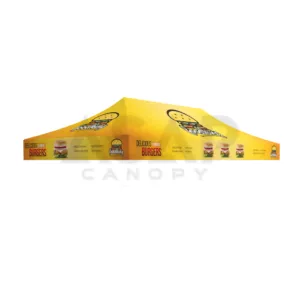
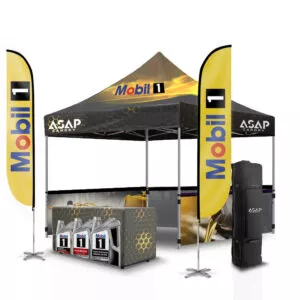


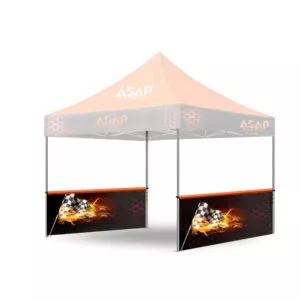
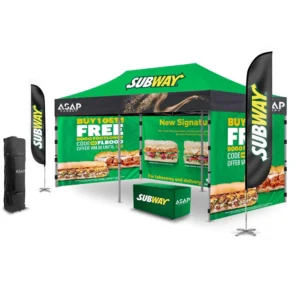

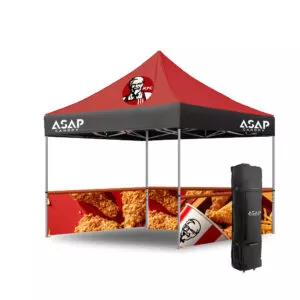
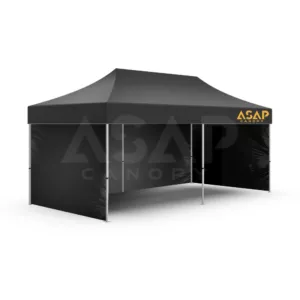



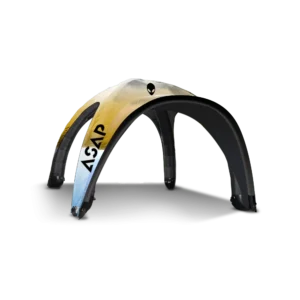

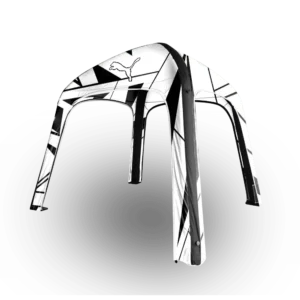



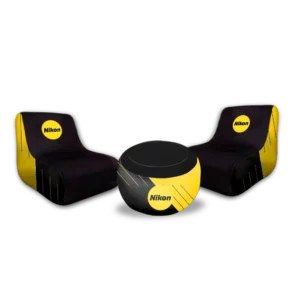




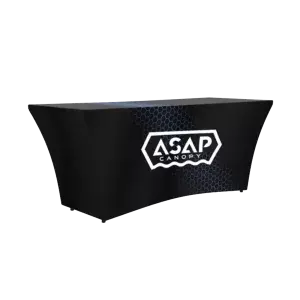

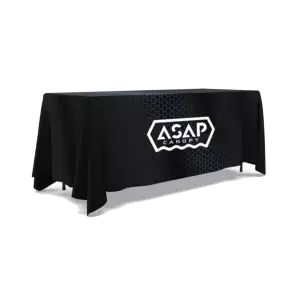





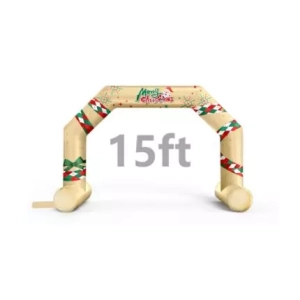





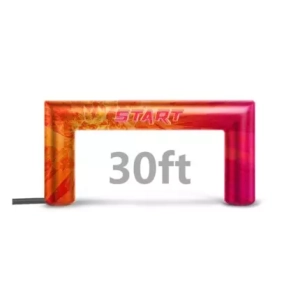





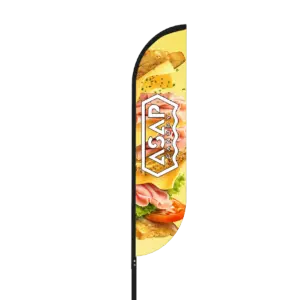


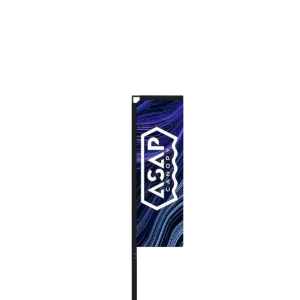

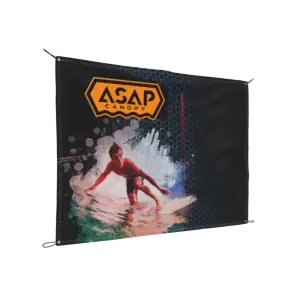
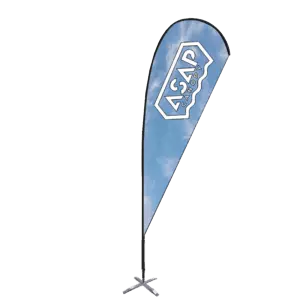

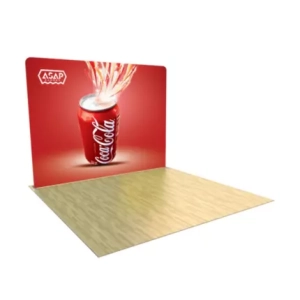

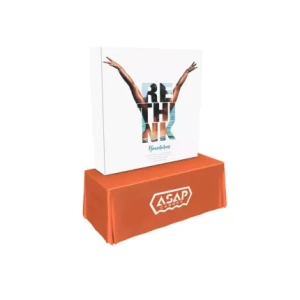

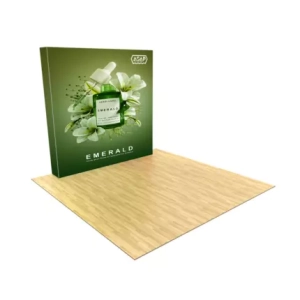



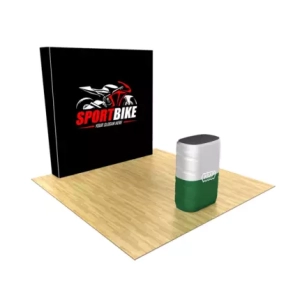



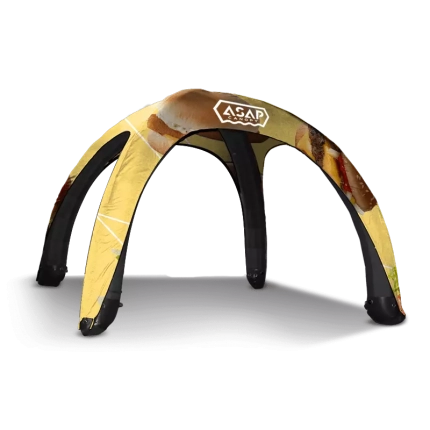


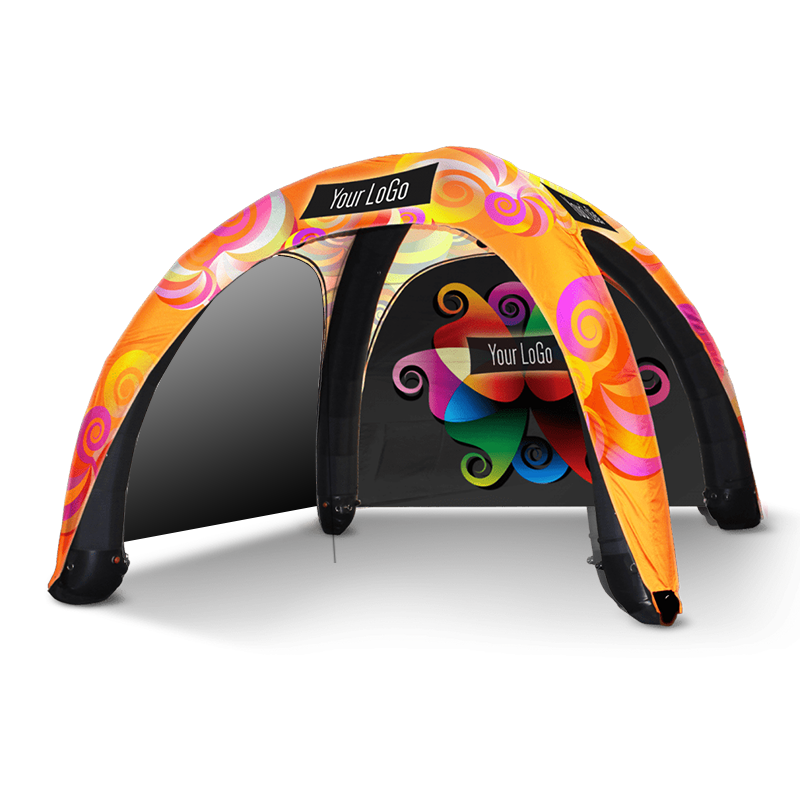






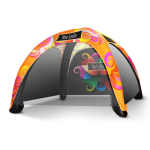



 5×5 Pop Up Tent
5×5 Pop Up Tent 6.5×6.5 Pop Up Tent
6.5×6.5 Pop Up Tent 10×10 Canopy Tent
10×10 Canopy Tent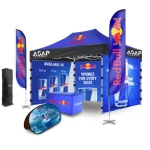 10×15 Canopy Tent
10×15 Canopy Tent 10×20 Canopy Tent
10×20 Canopy Tent Canopy Options
Canopy Options Blank Canopy Top
Blank Canopy Top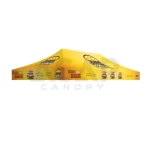 Canopy Top
Canopy Top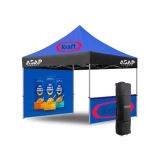 Canopy Walls
Canopy Walls Canopy Side Skirt
Canopy Side Skirt Blank Canopy
Blank Canopy Blank Canopy Kit
Blank Canopy Kit
 Inflatable Canopy Tents 10×10
Inflatable Canopy Tents 10×10 Inflatable Canopy Tents 13×13
Inflatable Canopy Tents 13×13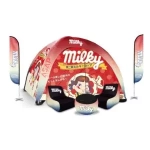 Inflatable Canopy Tents 16×16
Inflatable Canopy Tents 16×16 Inflatable Canopy Tents 20×20
Inflatable Canopy Tents 20×20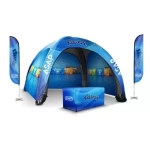 Inflatable Canopy Tents 23×23
Inflatable Canopy Tents 23×23 Inflatable Canopy Tents 26×26
Inflatable Canopy Tents 26×26 Inflatable Spider Tents
Inflatable Spider Tents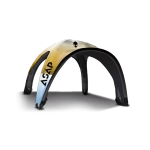 Inflatable Dome Tents
Inflatable Dome Tents Inflatable Eclipse Tents
Inflatable Eclipse Tents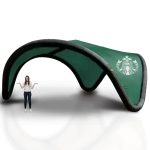 Inflatable Party Tent
Inflatable Party Tent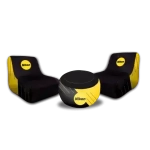 Inflatable Furniture
Inflatable Furniture Inflatable Pillar
Inflatable Pillar
 Single Pole Star Tents
Single Pole Star Tents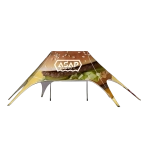 Double Pole Star Tents
Double Pole Star Tents
 15FT Inflatable Arches
15FT Inflatable Arches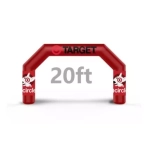 20FT Inflatable Arches
20FT Inflatable Arches 25FT Inflatable Arches
25FT Inflatable Arches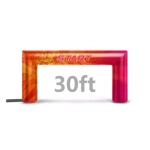 30FT Inflatable Arches
30FT Inflatable Arches 40FT Inflatable Arches
40FT Inflatable Arches 50FT Inflatable Arches
50FT Inflatable Arches Custom Constant Arches
Custom Constant Arches Custom Sealed Arches
Custom Sealed Arches
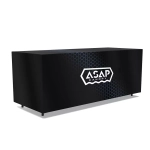 Fitted Table Covers
Fitted Table Covers Stretch-Fit Table Covers
Stretch-Fit Table Covers Loose Table Throws
Loose Table Throws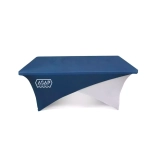 Cross-Over Stretch-Fit Table Cover
Cross-Over Stretch-Fit Table Cover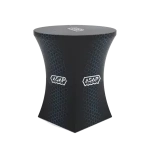 Round Stretch-Fit Table Cover
Round Stretch-Fit Table Cover Blank Table Throws
Blank Table Throws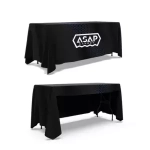 3-Sided Loose Table Throw
3-Sided Loose Table Throw Round Fitted Table Covers
Round Fitted Table Covers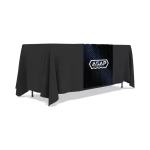 Table Runners
Table Runners Square Table Covers
Square Table Covers
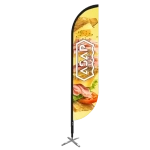 Feather Flags
Feather Flags Blade Flags
Blade Flags Feather Banner
Feather Banner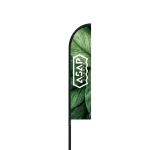 Blade Banner
Blade Banner Teardrop Flags
Teardrop Flags Teardrop Banner
Teardrop Banner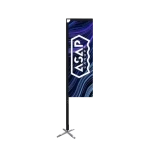 Rectangle Flags
Rectangle Flags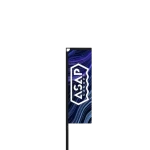 Rectangle Banner
Rectangle Banner Mesh Event Banners
Mesh Event Banners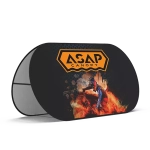 Pop Out Banner Horizontal
Pop Out Banner Horizontal Pop-Out Banner Vertical
Pop-Out Banner Vertical
 Trade Show Display
Trade Show Display Trade Show Display Kit
Trade Show Display Kit Pop Up Trade Show Display
Pop Up Trade Show Display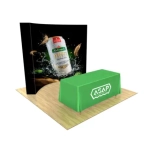 Pop Up Trade Show Display Deluxe Kit
Pop Up Trade Show Display Deluxe Kit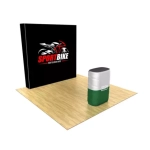 Pop Up Trade Show Display Kit
Pop Up Trade Show Display Kit TableTop Displays Kit
TableTop Displays Kit Pop Up Tabletop Display Kit
Pop Up Tabletop Display Kit Pop Up Tabletop Display
Pop Up Tabletop Display Tabletop Display
Tabletop Display Straight Trade Show Exhibit Booth
Straight Trade Show Exhibit Booth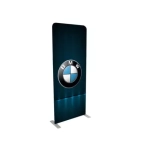 Banner Stand
Banner Stand
 Tent Accessories
Tent Accessories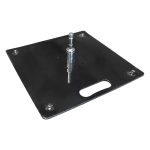 Flag Accessories
Flag Accessories Arch Accessories
Arch Accessories Trade Show Accessories
Trade Show Accessories

Aiden Walker –
The event Inflatable Canopy is a fantastic addition to our outdoor events. We’ve used it as a inflatable bar tent and as a shelter for our beach parties. The versatility of this tent is unmatched. It’s not just an ordinary inflatable beach tent; it’s a multi-functional space that adapts to our needs. Plus, the setup is quick and hassle-free, thanks to the included pump.
Gavin –
The stability Inflatable Canopy was strong, I used this tent specifically on the beach, and the wind was pretty strong, but the tent was still rock solid. It is indeed designed to perform very reliably in windy conditions. Also I like that this tent is made of eco-friendly materials, which is very important to me. When I purchased this tent, I felt like I was making a small contribution to the environment too!
Enoch –
The UV protection function of UPF 50+ is very practical, especially in summer outdoor activities with strong sunlight, which can effectively protect the skin. I have used this Inflatable Canopy for exhibitions, fairgrounds, weddings and outdoor gatherings and it has performed well in a variety of settings and can withstand winds up to 30mph which gives me peace of mind in windy areas
Dominic –
Very creatively versatile, I also use this Inflatable Canopy for outdoor events and picnics, its versatility allows me to make the most of it for a variety of occasions. The customizability of the tent allowed me to personalize it for different brand events and themes, increasing its visibility!
Eugene –
As a frequent visitor to music festivals, I found this Inflatable Canopy perfect for the occasion. Not only is it easy to carry, but it provides a comfortable shelter at an outdoor music festival, and I’m very pleased that the tent shipped very quickly and didn’t make me wait too long!